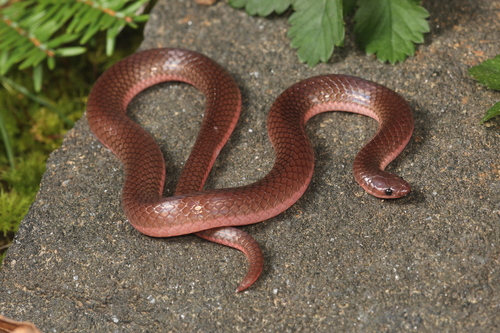
Worm Snake
Worm snakes, Carphophis amoenus and Carphophis vermis, are elusive, glossy-scaled serpents thriving in moist, subterranean habitats. Their diet of earthworms aids nutrient cycling, underscoring their ecological role. With their secretive nature and unique feeding habits, these diminutive snakes captivate herpetology enthusiasts and nature lovers alike.
4 years
Lifespan
Length: 19 - 28 cm
Size
Red, Black, Dark, Brown, Purple, Pink
Color
Low
Aggression
Characteristics
Carphophis amoenus and Carphophis vermis, commonly known as worm snakes, are small, burrowing snakes found in the eastern United States. They have smooth, glossy scales, a pinkish belly, and a brownish back. Preferring moist environments, they spend much of their time underground, feeding on earthworms and soft-bodied insects.
Distribution Range of the Worm Snake
Carphophis amoenus, commonly known as the Eastern Wormsnake, is native to the eastern United States. It is primarily found in the southeastern and mid-Atlantic regions, extending from southern New England down to northern Florida, and westward to eastern Texas. Carphophis vermis, known as the Western Wormsnake, is native to the central United States, with its range spanning from Iowa and Illinois southward to eastern Texas and Louisiana.
Worm Snake's Habitat
Environmental Conditions
Both Carphophis amoenus and Carphophis vermis inhabit areas with moist soil, often in deciduous forests, grasslands, and agricultural fields. They prefer environments with ample leaf litter, logs, and other ground cover that provide cool, moist conditions necessary for their survival. These snakes are often found near streams, rivers, or other bodies of water, which contribute to the moisture of their habitat.
Ecological Niche
The ecological niche of these wormsnakes involves them being fossorial, meaning they spend much of their time underground or hidden in leaf litter. Their diet mainly consists of earthworms and other small invertebrates, which they hunt in the moist soil. This fossorial lifestyle helps them avoid predators and extreme weather conditions. Their presence in the ecosystem supports the control of soil invertebrate populations and contributes to soil aeration through their burrowing activities.
Copyright @ Nature Style Limited. All Rights Reserved.
 English
English